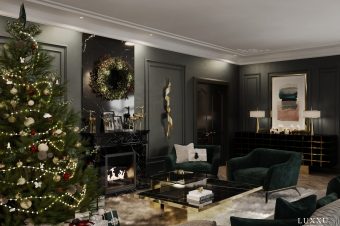Truth be told, the office or working environment is the place we spend more time asides our homes At least, I can say that because I spend more time in the office than at home. As a Professional Interior Designer in Lagos, I understand that your working environment should be made up of all the elements that increases staff productivity. So today’s blog post will be about designing a working environment that increases staff productivity. This means that the design must be inspiring, energizing, safe and functional for workers.

As an aspiring interior designer, you need to understand that interior design is the art of, not just understanding people’s behavior, but to create functional spaces within a building through creativity and providing technical solutions. Our focus today is on what to consider when designing a working environment.
A lot of interior designers mix the concept of designing homes with that of designing working environments that is why I decided to clear the air on what you have to consider when designing a working environment.
When designing an office, you can decide to leave the space on a calm state and uncluttered or going for a more bold and colorful design with lots of accessories. However, whatever your design preference, these factors should be at the forefront when planning on designing a working environment: furniture, noise, flexibility, comfort, communication, lighting, temperature and the air quality. In fact, your goal here is to create an inspiring ambience because working in an inspiring space puts people in a better mood and will increase their productivity.
Here is the List of things to consider when design a working environment.
Layout: It is an important health and safety issue for workers to have a workplace designed to optimize their performance. While some offices have open floor plan, some may have offices segmented by cubicles or dividers to separate spaces. To determine the layout of an office project, my student at Simplinteriors School of Interior Design and Entrepreneurship understands that it depends on the type of activity that will be carried out on the space. The first question to ask your client is what are the activities that will be carried out by the staff in this space? Like I always say in class, this will give you insight to properly plan the layout to suit the requirement of the staff. As the CEO of one of the top interior design schools in Lagos, I will take you on the concept of space planning and this will enhance your knowledge on how to understand a space and plan it accordingly. For example, when designing a more collaborative environment, I will recommend an open layout, while a job that requires discretion will be better with separate offices for privacy reasons

Lighting: There is this feeling that lighting gives and it is somewhat tied to satisfaction. Let’s look at it from a professional Interior designer’s lens, good lighting is crucial for occupant satisfaction, and also, our understanding of the health benefits of light is growing all the time. Psychologically, good light can help reduce depression and increase cognitive performance. As an Interior design you should have good understanding of lighting to be able to properly decide the perfect lighting for an office environment. Ambient light can be thought of as a general brightness or glow in a room. Whether that comes from lamps, installed fixtures or recessed lighting, ambient lighting (as opposed to overheat fluorescent lighting) can make a big impact in your office space.
When it comes to larger spaces you can also create collaboration zones within larger areas with space-defining lights like big lamp. Some of the effects of big lamps is that it brings down ceiling heights in open offices and provides soft light for users.
Incorporate Nature: There is just a way nature brings about fresh feeling to an environment. Before i go on, i will be listing sone of the benefits in the work environment:

- It helps reduces stress
- It increases productivity
- It reduces sickness
- It makes workspaces more attractive to staff
- It cleans the air
- It reduce noise levels
- They can boost creativity
With the benefits of nature stated above, it is a great option, not just for aesthetical design, but to create a healthy and a more nature friendly working environment that will be welcoming, positive, refreshing, and vibrant. Like I always say when it comes to interior design generally, the same design elements apply to both home and offices however different areas has to be considered individually when designing a working environment.
In conclusion, designing a working environment largely has to do with the end user in mind and at Simplinteriors School of Interior Design and Entrepreneurship we train you and also increase your ability to properly design an effective and productive working environment. At this point, I must say this is closely related to your level of creativity and your understanding of the interior design principles.




Leave a Reply